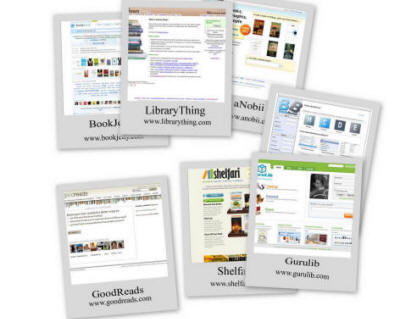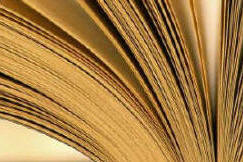Online Personal
Book Cataloging
Terence W.
Cavanaugh
A long time ago, in a place not too far away (usually it's just done the
hall), there used to be a thing called a card catalog or library catalog. In
these large wooden boxes were lots of little cards and on these cards was
information written about the contents of a collection. The information
written was to enable someone to find a book by author, title, or subject.
For most schools those days are gone, and instead the card catalog has moved
into some digital version, and if there is a card catalog they are kept like
museum pieces. So this then leads to the question - how are you
cataloging your classroom collection?
Before recent applications with collaborative web tools, to track your
classroom or personal book collection could have been a pain. Most teachers
that I know just don't have a catalog system for their personal collections,
and then they often become frustrated. Some times the frustration comes as
they look for a book gone missing, they know that they lent it, but they
can't remember who to or when. If you are one of the ones that have tracked
your books, most likely you were limited to writing them out in a notebook,
using a spreadsheet, or using a database program. While there are a number
of good cataloging programs, like the software database program Books for
the Mac, they have a limitation of being installed and run on a single
computer. This can be a problem if you went home and then needed to know how
many copies of the Yearling you have in your classroom.
Today there are a number of online resources that you can use to catalog
your personal or class collection of books (see Figure 1). This kind of
online tool will enable you to access information about your collection from
any Internet connection. Such an online catalog will also give you access to
Collaborative or Social Networks which are based upon an interests in books.
These online cataloging sites let you create detailed online book catalogs,
learn about the collections of other members, discover shared favorites and
swap recommendations. For yourself use these online book catalogs to know
what is in your collections, your classroom collection, the books you have
at home, and your professional collection.
Online Book Cataloging Services:

LibraryThing:
http://www.librarything.com
Shelfari: http://www.shelfari.com/
BookBump: http://www.bookbump.com/
Gurulib: http://www.gurulib.com/
GoodReads: http://www.goodreads.com/
aNobii: http://www.anobii.com/
BookJetty: http://www.bookjetty.com/
All Consuming:
http://www.allconsuming.net
Creating your personal book catalog on the web site is relatively easy.
With an account with one of the cataloging service providers, you can enter
add the book from your collection. Most of the services will also get for
you the other information about your book, such as the International
Standard Book Number, or ISBN, and a thumbnail image of the cover. One of
the services, LibraryThing, even finds and shares the MARC data, such as the
book's Dewey number in your personal catalog. Many of the catalogs will also
catalog more than books, and can be used to also track video and music
collections. These services let you view or print your catalog instantly,
sorted by author, title, or by something called a "tag." You are not limited
to seeing your personal book catalog as just text, as your collection can be
displayed by your book covers or titles for browsing (see Figure).

Figure: Displaying a collection by using the images of the books
covers on LibraryThing.
Something different that you can do with these online book cataloging
services is that you can add tagging. Tagging is when you add a personal
note or key words that people use to help them categorize and remember a
book. So with your tags you can add information from the book or other
personal notes. Personal tags could include statements like "really scary,"
“books I’ve loaned out,” or the book's Lexile or reading level. Book based
tags could include story elements like "books in Florida" (setting) for
Because of Winn Dixie or "Alex Rider" (character) from the book
Snakehead from one of the series by Anthony Horowitz. You can then use
the tagging concept to identify books that you have loaned out and who and
when you loaned them. Then whenever you need you can run a search for your
tag, such as borrowed or loaned, and find out which books from your
collection are loaned to who and when they were loaned out. With some of the
sites the tags then go into and are displayed as a tag cloud. The tag cloud
is a display collection of the words that people have used to tag the book,
usually with the more popular tags being in a larger print (see Figure 3).
Clicking on a tag will usually either lead to the user name of its creator
and in turn to that person’s other book choices, or to a list of books that
have that tag attached to them.

Figure: Tag cloud for Misty's Twilight by Marguerite Henry on the
LibraryThing book catalog.
To add a book to your catalog collection you can either input books by
ISDN number, LOC number, title, or author. Just type the information into
the search box and press the search button. One quick way to enter your
books with some of the sites is to use a bar-code scanner. If you don't have
your own barcode scanner ask your librarian if they have a USB barcode
scanner that you can borrow. With the barcode reader all you do is go to the
adding books page, then point the reader at the UPC barcode on the back or
inside cover and then the IDSN information is automatically entered into the
search box. Next, the system searches for a match for what you entered and
then present you with a list of possibilities. You look over what was
presented, usually with the cover image, and then select the book's link.
Now that book and its information are then added to your collection. Most of
the sites also let you add more information for your book, such as comments
and when you read the book. Some of the sites have the ability to upload
and/or download your collection information, just in case you want to keep a
copy elsewhere.

Figure: Adding a book to your collection.
You can also take the catalog to the next level, using beyond just your
own personal use and turning it into a classroom tool or resource that
students actively use. One method would be to use the online book catalog as
a reading list resource for students, or as a form of book wish list for
your classroom. You can also create an account for your class, with you as
the account holder. Then integrate the catalog into student classroom
activities or they can even use it for their homework. The catalog could be
used in class by having your students participate with the catalog in
collaborative activities. Students could identify their own personal choices
for tags to include, write their own book reviews or booktalks about the
selected text. Most of the catalogs also provide a method for book rating,
so student could rate the book by using a scoring star system. Many of the
sites also provide discussion forum sections. Here students can go online to
talk about books with others, creating a form of a virtual book group that
meets whenever a student may have time. For homework students could use the
book catalog to investigate what others have written, do author studies, or
use it as a tool for book selections for literature circles. Students can
also use these resources to help them select what they might like to read
next, by picking one of the books from the catalog and then seeing what they
system recommends that they might like.
On a personal note, in case you couldn't tell, my favorite is
LibraryThing. For most classrooms with their allowing the first 200 books
cataloged free, should be enough for a classroom collection. Their $25 for
lifetime membership allows you to catalog an unlimited number of books and
have no advertising. You can visit my LibraryThing catalog at
http://www.librarything.com/catalog/tcavanau .


